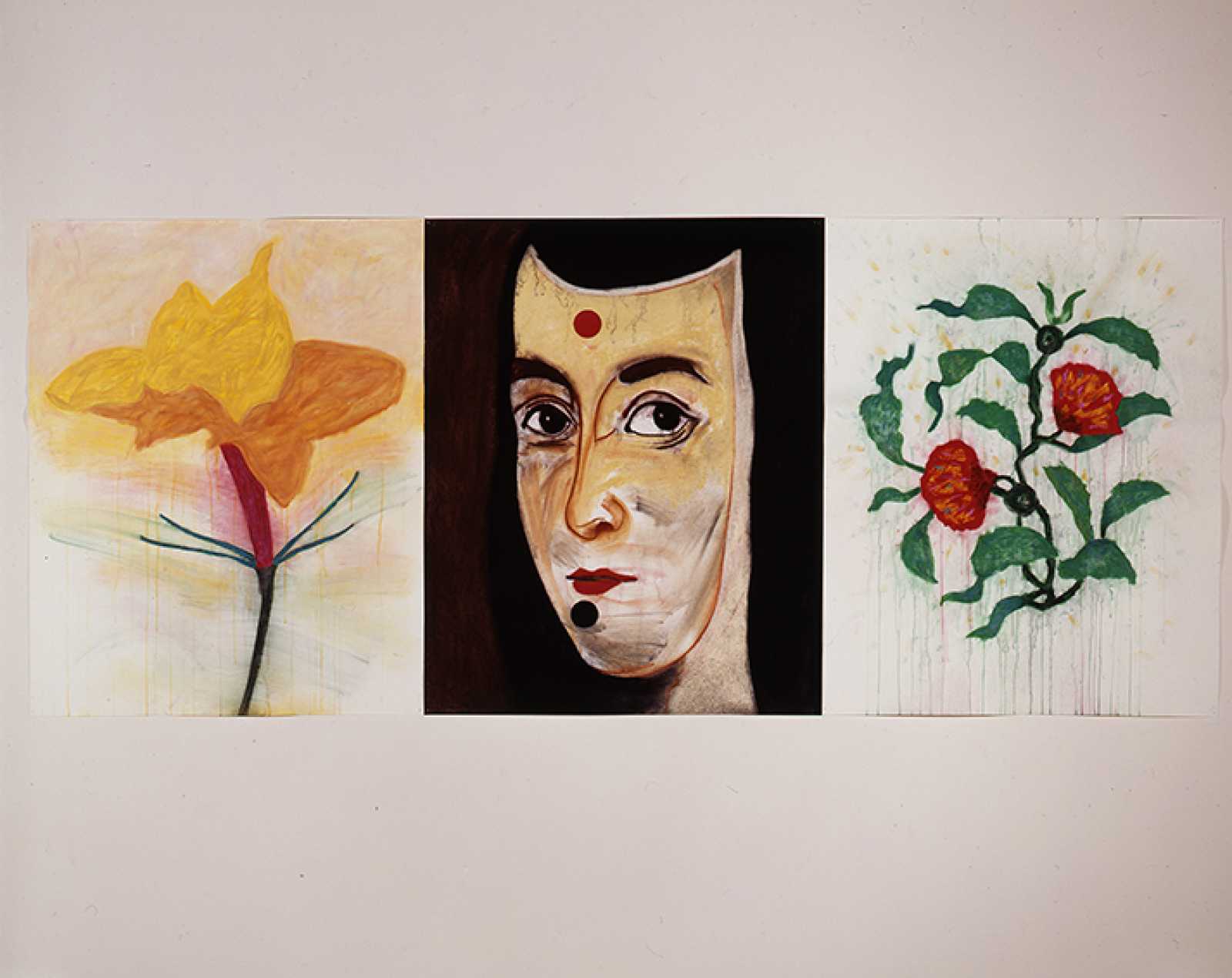Artwork of the Week
Rupert García
In his work, Rupert García incorporates a range of visual styles, from iconography inspired by the Mexican muralists including Diego Rivera, David Alfaro Siqueiros, and José Clemente Orozco, to the approaches of their European and American contemporaries. He has also merged what is considered fine art and graphic approaches to visual imagery, creating a style that consistently delivers powerful and topical political content.
According to García, this work is an homage to Sor Juana of Mexico, who overcame social and cultural obstacles to become one of Latin America’s great literary figures. Sor Juana Inés (1648-1695) was a self-educated—and controversial—nun, philosopher, composer, and poet who challenged colonialism and promoted education and women’s rights. In this triptych—a three-panel format that is common in historic religious painting—the central portrait is based on an 18th-century painting of Sor Juana by Mexican artist Miquel Cabrera. Flanking are floral tributes of red tree peonies and a yellow jasmine flower.
García has been active in civil rights and in the development of Chicano/Latino art and politics for over 50 years, addressing racism and the treatment of Latinos in the United States. After serving in the U.S. Air Force, he attended the San Francisco School for the Arts on the G.I. Bill, where his art education and interest in politics became intertwined. Living in the Bay Area, he joined Latino and minority movements protesting the disproportionate number of these groups drafted into service in Southeast Asia. He also placed priority on the creation of Latino art scholarships. In addition to holding Master’s degrees in both studio art and in art history, he authored a thesis on California Chicano Muralists and has published essays on the work of Frida Kahlo, among others.
Rupert García (American, born 1941), Un Ramo de Flores para Sor Juana Inés de la Cruz (A Bouquet of Flowers for Sister Juana Ines de la Cruz), 1996, pastel on paper triptych, 39 ¾ x 95 ¼ inches. Museum purchase with funds provided by the Contemporary Art Council, 1997, 20-1997 a-c.
Mark Klett
Trained in upstate New York as both a geologist and an artist, Mark Klett produces photographs that explore the Western landscape, historic images, and the conditions of photography. Central to his work is an understanding of 19th-century images of the American West and the human presence at the sites pictured—both past and present. One of the techniques he deploys is re-photography, which he uses as a contemporary look at a location depicted by an early 19th-century survey photographer from a similar vantage point. Through this approach he demonstrates the extent to which our understanding of sites is shaped by visual imagery, human presence, perception, and changing social conditions.
In View from the Tent at Pyramid Lake, Klett revisits the site originally photographed by 19th-century photographer Timothy O’Sullivan (1840-1882). Taken from a supine position, the photograph depicts our view through Klett’s tent door, both framing and mirroring the shape of Pyramid Rock. By directing our gaze along his body to the rock outside and to the distant horizon, Klett conveys the perspective of 20th century exploration, tourism, and freedom—through the perspective of his race, gender, and class. His recent work has also re-considered iconic locations previously captured in historic photographs taken at the Grand Canyon, Yellowstone, and the US/Mexico Border, demonstrating how human perception and visual representation frame our understanding of these landscapes.
Mark Klett (American, born 1952), View from the Tent at Pyramid Lake 7:45 a.m. Nevada 9/16/00, 2000, inkjet print, pigment-based, edition 5/50, 24 x 30 1/8 inches. Museum purchase with funds derived from a previous gift from Kirk and Anne Douglas. 35-2006.


